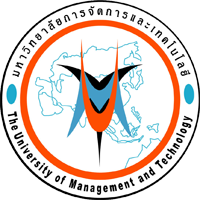The current and desirable states of private school teacher development model based on the concept of tpack and productive pedagogies
Keywords:
Development, Private School, Productive Pedagogies, TPACK, Out of Field TeacherDownloads
References
Queensland (2010).A guide to productive pedagogies classroom reflection manual.Retrieved August 2, 2011, from eduction.qld.gov.au.
Hayes, D. N. A., Mills, M., Christie, P., &Lingard, B. (2006). Teachers and schooling making a difference: Productive pedagogies, assessment and performance. Allen &Unwin.
Hobbs, L. (2012). Teaching ‘Out of Field’ as a Boundary Crossing Event: Factors Shaping Teacher Identity.International Journal of Science and Mathematics Education, 11, 271-297
Koehler, M. J., & Mishra, P. (2009). What is technological pedagogical content knowledge? Contemporary Issues in Technology and Teacher Education, 9(1), 60-70.
Krejcie, R. V., & Morgan, D. W. (1970). Determining sample size for research activities.Educational and psychological measurement, 30(3), 607-610.
Kurusapa. (2014). Teaching Permit without the License. Retrieved from http://www.ksp.or.th/ksp2013/content/view.php?mid=93&did=643
McCaffrey, J. R., Lockwood, D. F., Koretz, D. M., & Hamilton, L. S. (2003).Evaluating value added models for teacher accountability [Monograph]. Santa
Monica, CA: RAND Corporation. Retrieved from http://www.rand.org/pubs/monographs/2004/RAND_MG158.pdf
Ministry of Education. (2013). The Crisis of Teacher Retirement between Year 2013 2017. Retrieved from
http://www.moe.go.th/moe/th/news/detail.php?NewsID=32487&Key=hotnews
Ministry of Education.(2015). Ministry of Education announcement of student’s ratio reduction per classroom.Matichon Online. Retrieved from http://www.matichon.co.th/news_detail.php?newsid=1427358938
Ministry of Information and Communication Technology. (2013). Number of Students in Public and Private Institutions by Grade and Level of Education: Academic Year 2002-2013. Retrieved from http://service.nso.go.th/nso/web/statseries/statseries06.html
Ministry of Information and Communication Technology. (2013). Number of Teachers (The Formal School System) by Jurisdiction in Whole Kingdom: Academic Year 2005-2013. Retrieved from http://service.nso.go.th/nso/web/statseries/statseries06.html
Prakhankul, V., &Traiwichitkhun, D. (2016).A Study of Teaching Assignments and Teacher Efficacy of Out-of-Field Teachers in Primary School. An Online Journal of Education, 11(3), 390-406.
Shulman, L.S. (1986). Those who understand: Knowledge growth in teaching. Educational Researcher, 15(2), 4-14.
World Bank. (2012). Learning Outcomes in Thailand: What Can We Learn from International Assessments? Washington DC: World Bank.
World Bank. (2012). Strengthening Education Quality in East Asia. Washington DC: World Bank.
Downloads
Published
Issue
Section
License
ประกาศลิขสิทธิ์
เนื้อหาและข้อมูลในบทความที่ลงตีพิมพ์ในวารสารวิชาการมหาวิทยาลัยการจัดการและเทคโนโลยีอีสเทิร์น ถือเป็นข้อคิดเห็นและความรับผิดชอบของผู้เขียนบทความโดยตรง ซึ่งกองบรรณาธิการวารสารไม่จำเป็นต้องเห็นด้วยหรือร่วมรับผิดชอบใด ๆ
บทความ ข้อมูล เนื้อหาหรือรูปภาพ ฯลฯ ที่ได้รับการตีพิมพ์ในวารสารวิชาการมหาวิทยาลัยการจัดการและเทคโนโลยีอีสเทิร์น ถือเป็นลิขสิทธิ์ของวารสารวิชาการมหาวิทยาลัยการจัดการและเทคโนโลยีอีสเทิร์น หากบุคคลหรือหน่วยงานใดต้องการนำข้อมูลทั้งหมดหรือบางส่วนไปเผยแพร่ต่อหรือเพื่อกระทำการใด ๆ จะต้องได้รับอนุญาตเป็นลายลักษณ์อักษรจากวารสารวิชาการมหาวิทยาลัยการจัดการและเทคโนโลยีอีสเทิร์นก่อนเท่านั้น




